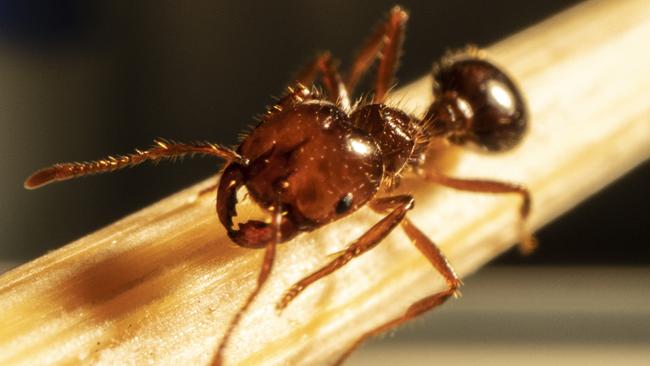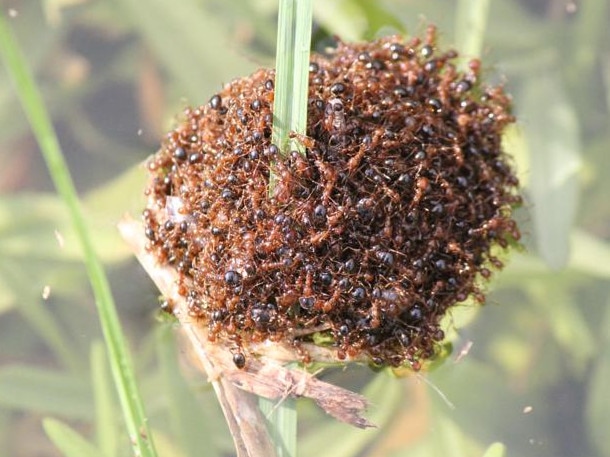New infestation significantly raises fire ant spread risks
A new fire ant infestation on the edge of the Murray Darling Basin has raised fears they could swiftly spread through NSW, Victoria and South Australia.

A new fire ant infestation on the edge of the Murray Darling Basin has prompted urgent calls for action just a day after federal inquiry found better funding and research was needed to eradicate the pests.
The discovery of the ants at Oakey, near Toowoomba on Queensland’s Darling Downs, on Friday, marked the westernmost march of the invasive species and heightened fears that they would use the region’s waterways to spread into the NSW foodbowl.
New modelling released by The Australia Institute this week found previous estimates had “significantly understated” the threat posed by fire ants, which would cost the government $22bn in health consultations and control measures by 2040 if not properly treated.
The new outbreak was discovered just a day after a Senate committee handed down a report recommending a review of funding arrangements and amounts, better transparency between government agencies and more research into control techniques and technologies.
Committee chairman Nationals senator Matt Canavan said the ants posed perhaps Australia’s greatest current biosecurity challenge.
“The risk of a wider outbreak of red imported fire ants is high, given they have evaded all attempts to eradicate them over two decades,” he said.
“The consequence of a broader outbreak is severe, affecting agriculture, native species, and human health.”
An extra $593m in state and federal funding was announced last year but experts say more is needed.
The discovery of the Oakey outbreak, west of the Great Dividing Range, increased calls for urgent action.
“If left to run rampant, it’s only a matter of time before fire ants form rafts and float with water currents during wet weather to new locations,” Invasive Species Council chief executive Andrew Cox said. “From there, they could rapidly spread to vast areas of Australia.

“This is a national emergency that needs a national emergency response from the state and federal governments.”
Nationals leader David Littleproud said the new infestation, 30km from their previous westernmost point, meant more funding was needed. “The frightening thing is that if fire ants get up above the Great Dividing Range, it could potentially get into the Murray Darling Basin and that could effectively see the fire ants go right down to Adelaide,” Mr Littleproud said.
The aggressive ants, which inflict a painful sting that affects humans, pets, livestock and wildlife, have caused significant environmental, social and economic damage to countries where they are not native.
They were first discovered at the Port of Brisbane in 2001 and, despite $690m being spent on their eradication, have spread beyond the Queensland government’s containment lines in the state’s populous southeast corner. Two infestations have been found in northern NSW.
Eradicating the ants involves finding and destroying colonies and preventing their further spread through the transfer of soil, mulch, plants and livestock fodder.
Seven other infestations have previously been eradicated, but the southeast Queensland outbreak is by far the biggest.
The authors of The Australia Institute review said spending $200m-$300m a year for 10 years would deliver good value in the long run. “However, the eradication program has so far only been granted $592.8m for four years,” the report said.
“This is clearly not enough to deal with what could prove to be one of Australia’s most noxious invasive species but, as our analysis shows, the upfront costs of stopping the spread of (fire ants) now are significantly less than the price Australians will pay in the 2040s if nothing is done.”







To join the conversation, please log in. Don't have an account? Register
Join the conversation, you are commenting as Logout